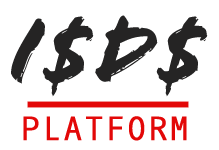Amid India’s trade blitz, New Zealand joins the race for a deal
South China Morning Post | 22 March 2025
Amid India’s trade blitz, New Zealand joins the race for a deal
by Amy Sood
After years of stalled negotiations, New Zealand and India are racing to finalise a free-trade agreement, with Prime Minister Christopher Luxon vowing to secure a deal within 60 days.
The renewed push reflects New Delhi’s growing appetite for global trade partnerships in response to geopolitical challenges, analysts say. India is simultaneously pursuing agreements with the UK and the EU, driven by its export-led growth ambitions and concerns over US trade policies.
Luxon announced on Tuesday that both nations were eager to finalise the long-delayed pact after meeting his Indian counterpart in Delhi.
“Let’s drive this relationship forward, and I look forward to signing that agreement with Prime Minister [Narendra] Modi,” he said.
Bilateral trade between India and New Zealand grew by over 30 per cent year on year, reaching US$1.2 billion in 2024, according to India’s trade ministry. A free-trade agreement could strengthen collaboration in sectors such as agriculture, aerospace, pharmaceuticals and renewable energy. Indian Trade Minister Piyush Goyal has predicted that trade between the two countries could grow tenfold over the next decade.
However, previous negotiations were hindered by India’s cautious stance on its dairy sector, a key area of contention. Soumya Bhowmick, a fellow at the Observer Research Foundation think tank, explained that India’s protective measures were aimed at safeguarding domestic farmers from foreign competition.
“This cautious approach was rooted in India’s strategy to safeguard its value chains,” Bhowmick said, noting Delhi had argued that lowered tariffs on agricultural products could threaten the livelihoods of millions of small-scale farmers.
While the outcome of the New Zealand-India negotiations remains uncertain, analysts say the renewed engagement reflects India’s broader growth strategy, which emphasises trade and exports.
India’s policymakers have been actively working to strengthen bilateral ties with strategic partners, particularly in the aftermath of the Covid-19 pandemic, said Ajay Srivastava of the Global Trade Initiative, a Delhi-based think tank.
The South Asian nation has signed several trade agreements in recent years, including a 2021 deal with Mauritius, followed by similar agreements with Australia and the UAE in 2022. Last year, India struck a pact with the European Free Trade Association, encompassing Switzerland, Norway, Iceland and Liechtenstein.
India’s trade agenda has gained momentum in recent months. In February, both India and Britain pledged to expedite talks on a trade deal, which would include an FTA and an investment treaty. That same month, India and the EU committed to a year-end deadline for finalising their FTA.
European Commission President Ursula von der Leyen said the proposed FTA between the EU and India “would be the largest deal of this kind anywhere in the world”.
“You can count on my full commitment to make sure we can deliver,” she said after meeting Modi in India.
Despite these commitments, India’s negotiations with the UK and the EU have been protracted and complex. An initial goal to finalise the UK deal by late 2022 fell through, while India and the EU resumed trade talks in 2022 after a nine-year hiatus. Both sides say they hope to strengthen economic ties to counter China’s growing influence in the Indo-Pacific.
Economist Amitendu Palit, a senior research fellow at the National University of Singapore’s Institute of South Asian Studies, said that India’s renewed urgency in negotiations stemmed from shifting global trade dynamics and the potential impact of US tariffs on relations between the US, Europe and Asia.
Washington’s shift away from a rule-based order in its trade policies under President Donald Trump had prompted other countries to establish rule-based frameworks with trading partners to lessen the effect of US actions, he said.
“The political urgency to tie up these relationships, which have been in the works for a long time, has actually received purpose from the US trade wars,” Palit added. “In some ways, it has accelerated this.”
Trump unveils reciprocal blanket tariffs review of all major US trading partners
India’s active pursuit of FTAs does not imply a diminishing interest in collaborating with the US, according to analysts. Modi was among the first world leaders to meet Trump after his return to the White House, during which both sides agreed to expand two-way trade. However, India will still face US tariffs set to take effect next month.
To manage its relationship with Washington, Delhi has announced plans to reduce tariffs on American goods, including automobiles, certain agricultural products and chemicals.
Last week, Indian officials emphasised that talks with the US to reduce trade barriers and enhance supply chain integration were ongoing.
Palit argued that India’s foreign policy had long been guided by a “multi-alignment” strategy, balancing relationships with various global powers. He suggested that India’s trade policy reflected this approach.
“For countries like India, it is not possible to pursue strategic isolation,” he said, adding that it was crucial for Delhi to “align its trade policy with its long-term national interests by entering into FTAs with other partners” because “the United States is pursuing a policy of strategic isolation through its tariff trade doctrine”.
Bhowmick echoed this sentiment, telling This Week in Asia that finalising FTAs with partners such as New Zealand, the UK and the EU could unlock new markets and support India’s export-driven ambitions.
“This mutual access could stimulate economic growth, create jobs, and foster innovation across sectors in all involved economies,” he said.





